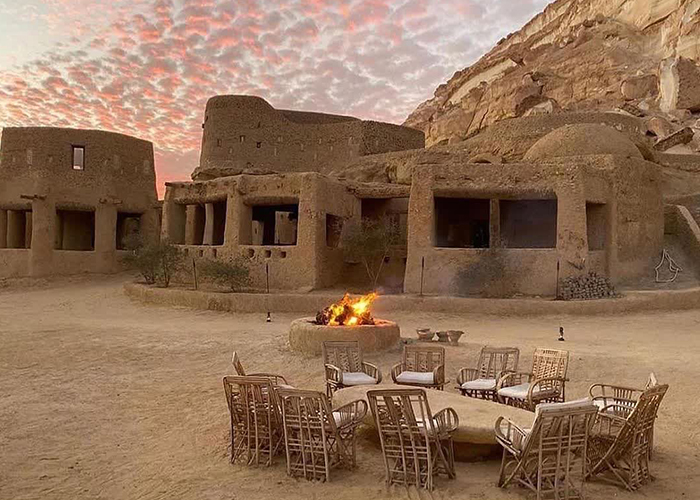Siwa Oasis is a popular place for tourists to visit in Egypt:
Siwa was empty of Egypt until the end of the nineteenth century because hundreds of kilometers of desert separated it. During that time, she was able to maintain her own culture. Since ancient times, it has been a target of enemies due to its remoteness. During the sandstorm, Cambyses’ army left.
Alexander the Great went to the oasis to speak with the oracle of Amon. People loved to read Arabic stories about the center in the nineteenth century. Siwa has been visited by kings, presidents, anthropologists, and even modern-day generals. Since the mid-1980s, many tourists have been coming to the area. In recent years, tourists and tour groups have flocked to Siwa.
The oasis has thriving palm groves, bubble springs, salt lakes, tall peaks, and giant dunes. Sevan was safe from desert invaders due to the unreleased mud bricks of Shali and Akhurmi. The ruined temples around the oasis show that Siwa was a thriving Greek and Roman city. People say that this is where Alexander the Great died and was buried.
Visitors are also interested in how Sevan culture deals with the spread of information, the growth of youth, and the influx of tourists. Older women wear only traditional clothes and add silver jewelry and braids. In the Nile Valley, young wives and single women wear the same clothes.
The Siwan still celebrate their traditional holidays and weddings and speak the Sissi Berber language. The Sivan’s understand what makes them different and want to maintain that even as the world changes.
The location of Siwa Oasis:
Before the Twenty-sixth Dynasty (524-404 BC), when the oracle was famous there, no one knew much about Siwa Oasis. This includes when people from the Paleolithic period lived and did hunting and gathering. Because the nomads in the desert repeatedly attacked the village of Siwan I, it turned into a fortified acropolis. The only thing written about the city in ancient times is that it was called Aghurmi and was a station for caravans that traveled between Cyrenaica and Sudan.
They speak a form of the Berber language family led by women, suggesting that they may have been matriarchal. The Sivan manuscript, over a hundred years old, tells the story of what happened to them next. Attacks by nomads and Berbers reduced the population of the Aghurmi to 200 by the 12th century.
About Siwa:
The biggest problem for the people of Siwa is that the fresh water from the springs makes the salt lakes bigger and saltier. Bagnold said the weather was “hot and hard to breathe” and smelled “a little sweet, like burning grass dying of salt.”
The water table is only 20 cm deep, evident from the smelly ponds where swarms of mosquitoes live. It was expensive to build septic tanks in an oasis 18 meters below sea level, but since 1907, land reclamation programs have tried to solve this problem. As foreign engineers finish laying the pipes, the water level rises.
Because of unspoken agreements, there are Egyptian military stations in Sevan, and the people who live there are happy to have access to modern medicine, technology, and communications. Patients who used to go to Marsa Matruh can now go to one of two hospitals in the area. More than 30 local Sivians returned to the oasis when they graduated from college.
In 1984 a road to Matrouh was built, and thisthisthisthisthisthisthiswing tourists visit the oasis areas and sell dates and olives outside Egypt. In the 1990s, many new olive oils, mineral water, and carpet factories helped the local economy recover. About 500 women from Sevan began embroidering for an Italian fashion company, which pays them twice as much as their old farming jobs. Since they are financially independent, single women may be more selective about who they want to date.
Conservatives are concerned about Siwa choosing to live in cement-brick houses with bathrooms. The governor of Marsa Matrouh has temporarily stopped building new homes after lobbying by Mounir Nematullah of Ecolodge and the Siwa Friends Association. He later changed his mind and allowed them to make, but only if they were wrapped in mud in the traditional oasis style. The bank and police station look like they belong in a spaghetti western.


0 Comment